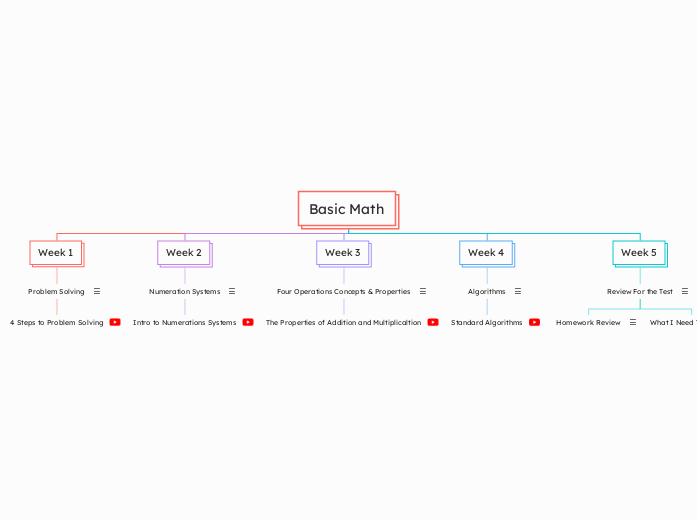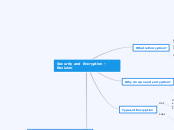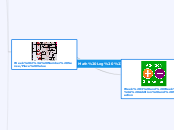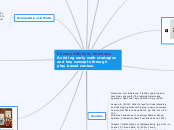Basic Math
Week 5
Review For the Test
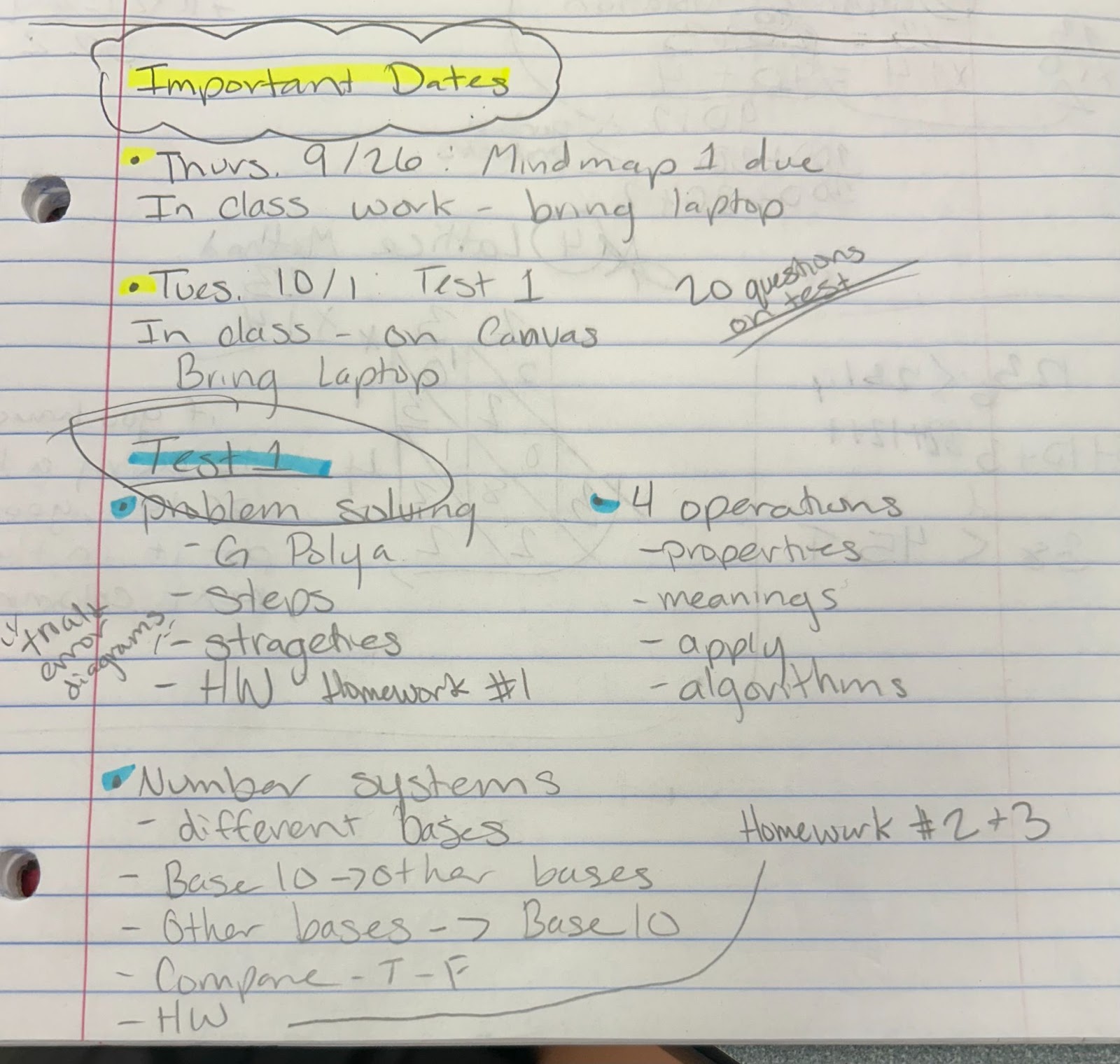
What I Need To Review
Homework Review
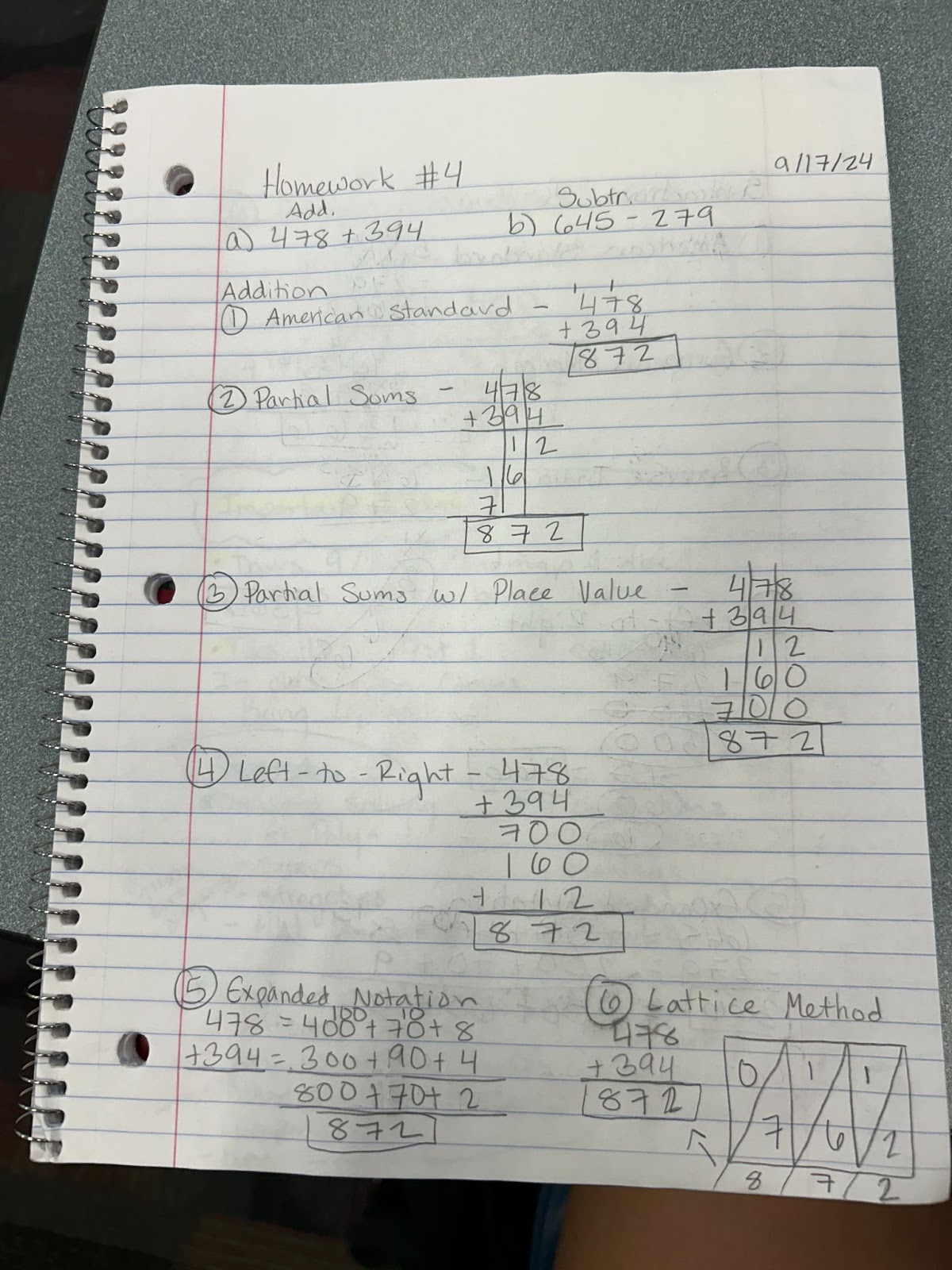
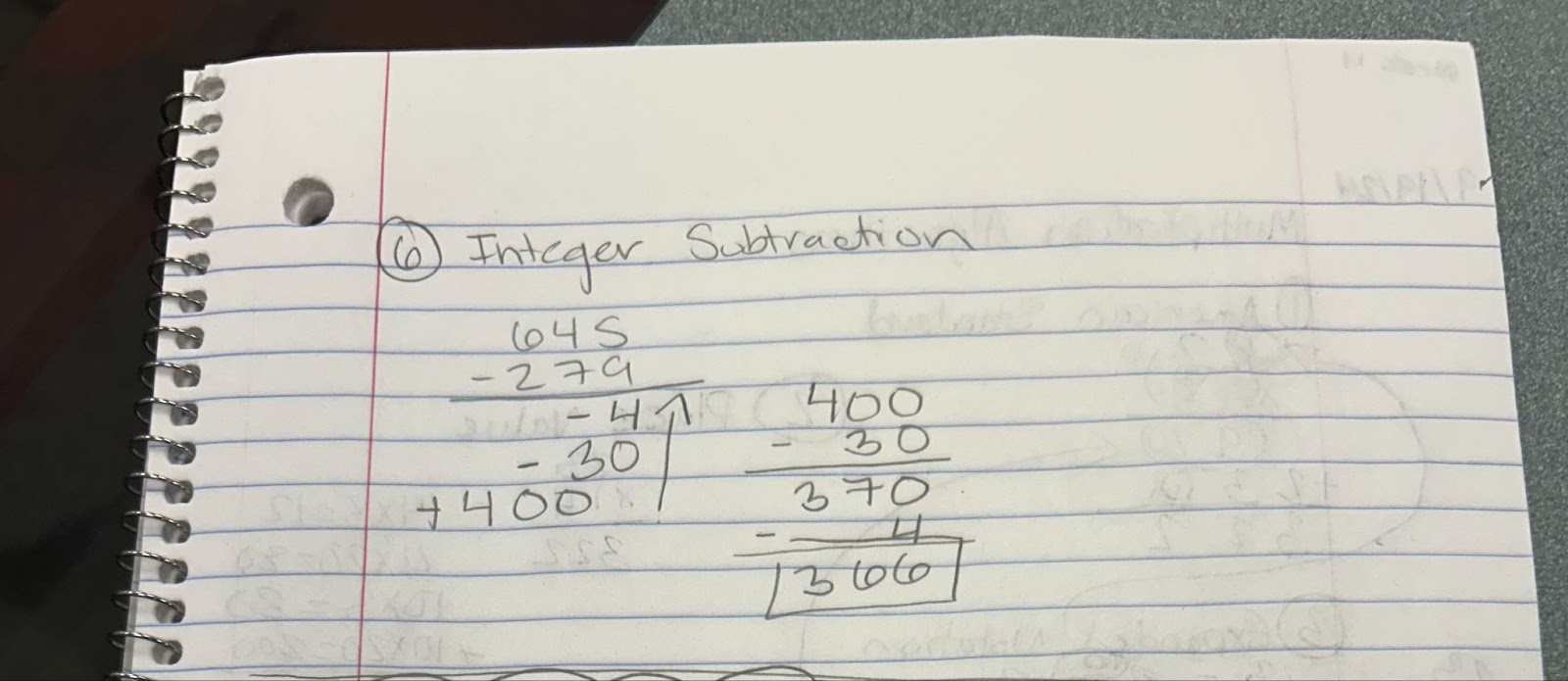
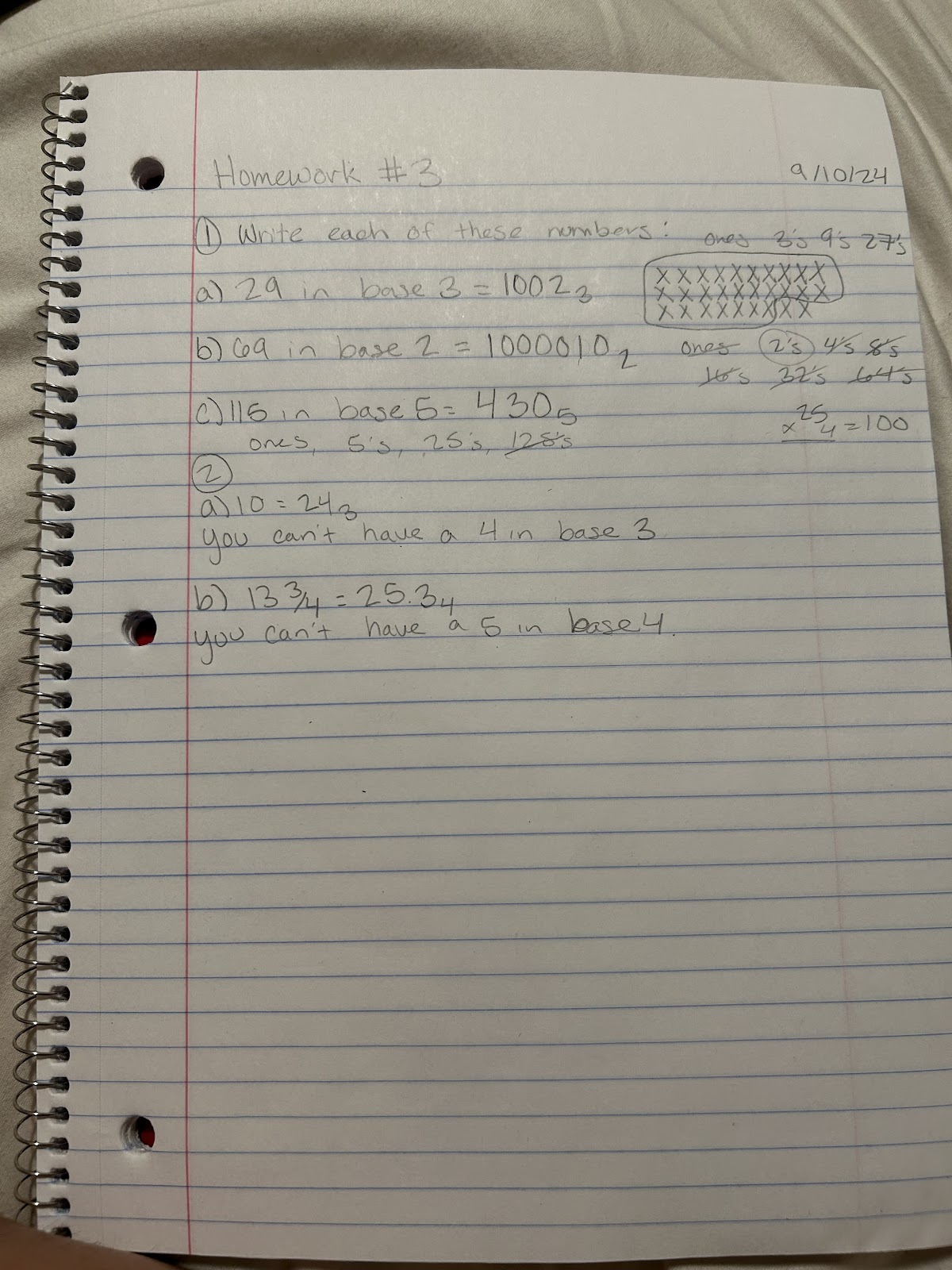
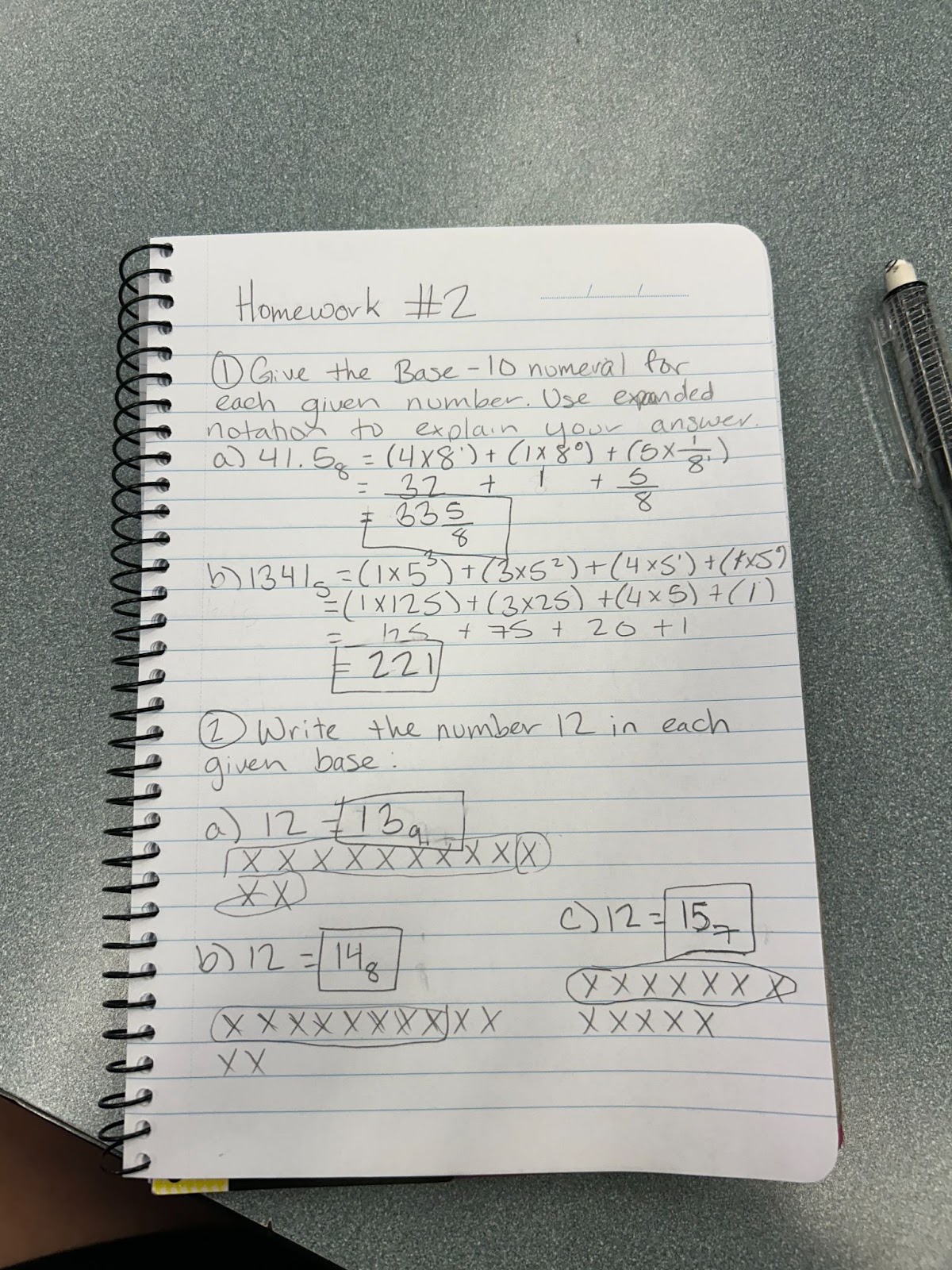
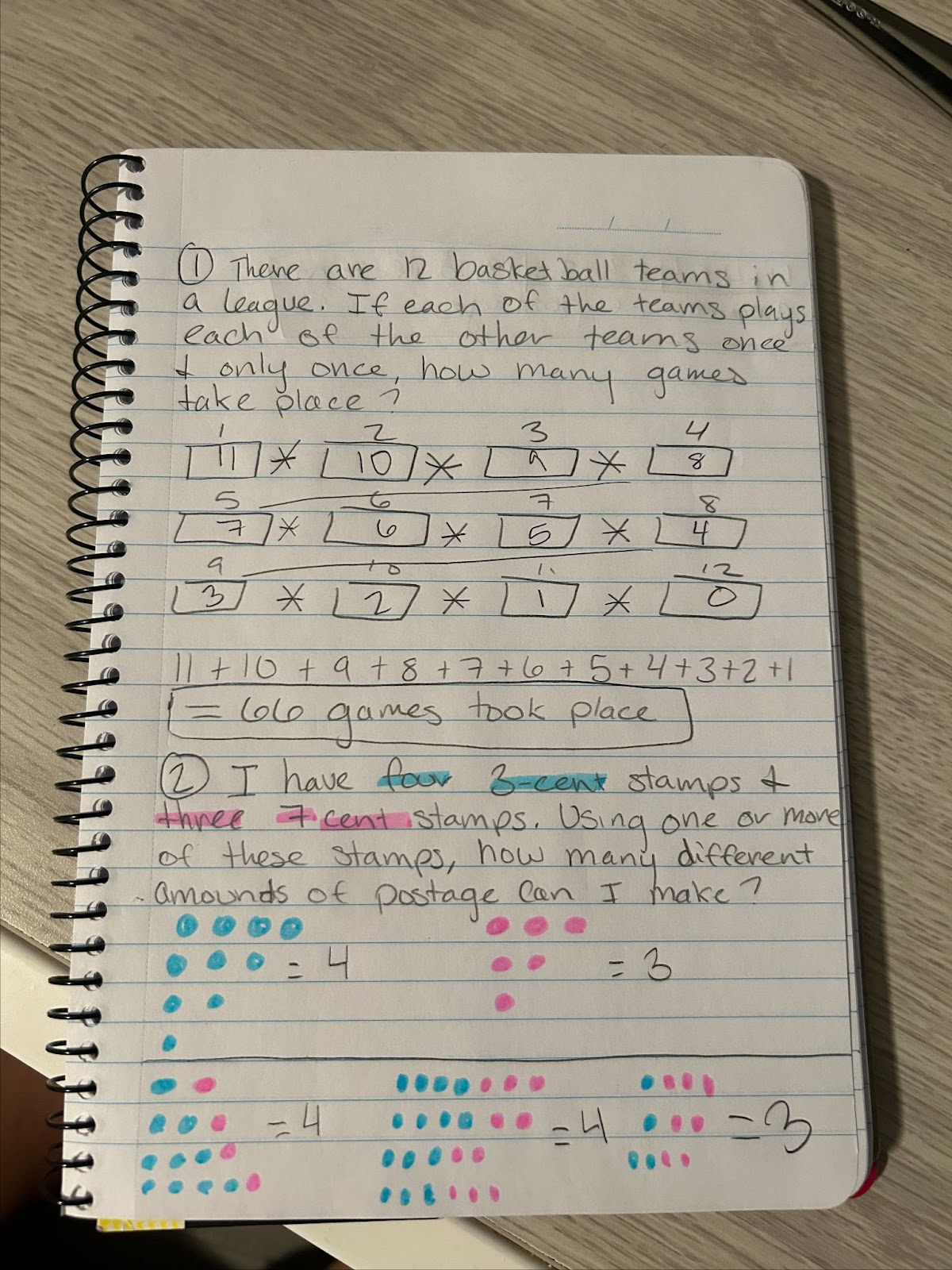
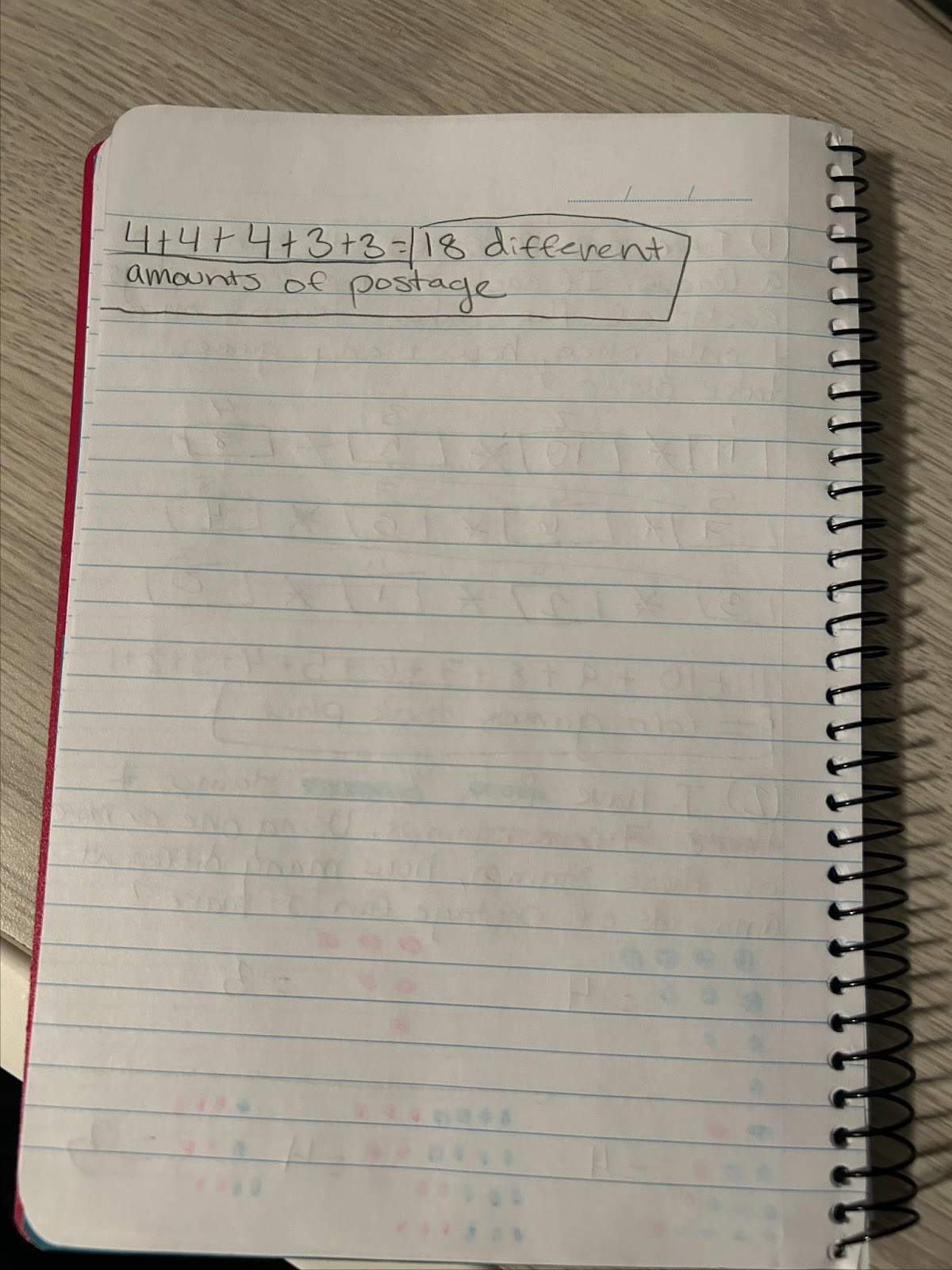
Week 4
Algorithms
Addition Algorithms
There are 6 addition algorithms:
- American Standard
- Partial Sums
- Partial Sums w/ place value
- Left-to-Right
- Expanded Notation
- Lattice Method
Subtraction Algorithms
- American Standard
- European/Mexican
- Reverse Indian
- Left-To-Right
- Expanded Notation
- Integer Subtraction
Multiplication Algorithms
- American Standard
- Place Value
- Expanded Notation
- Lattice Method
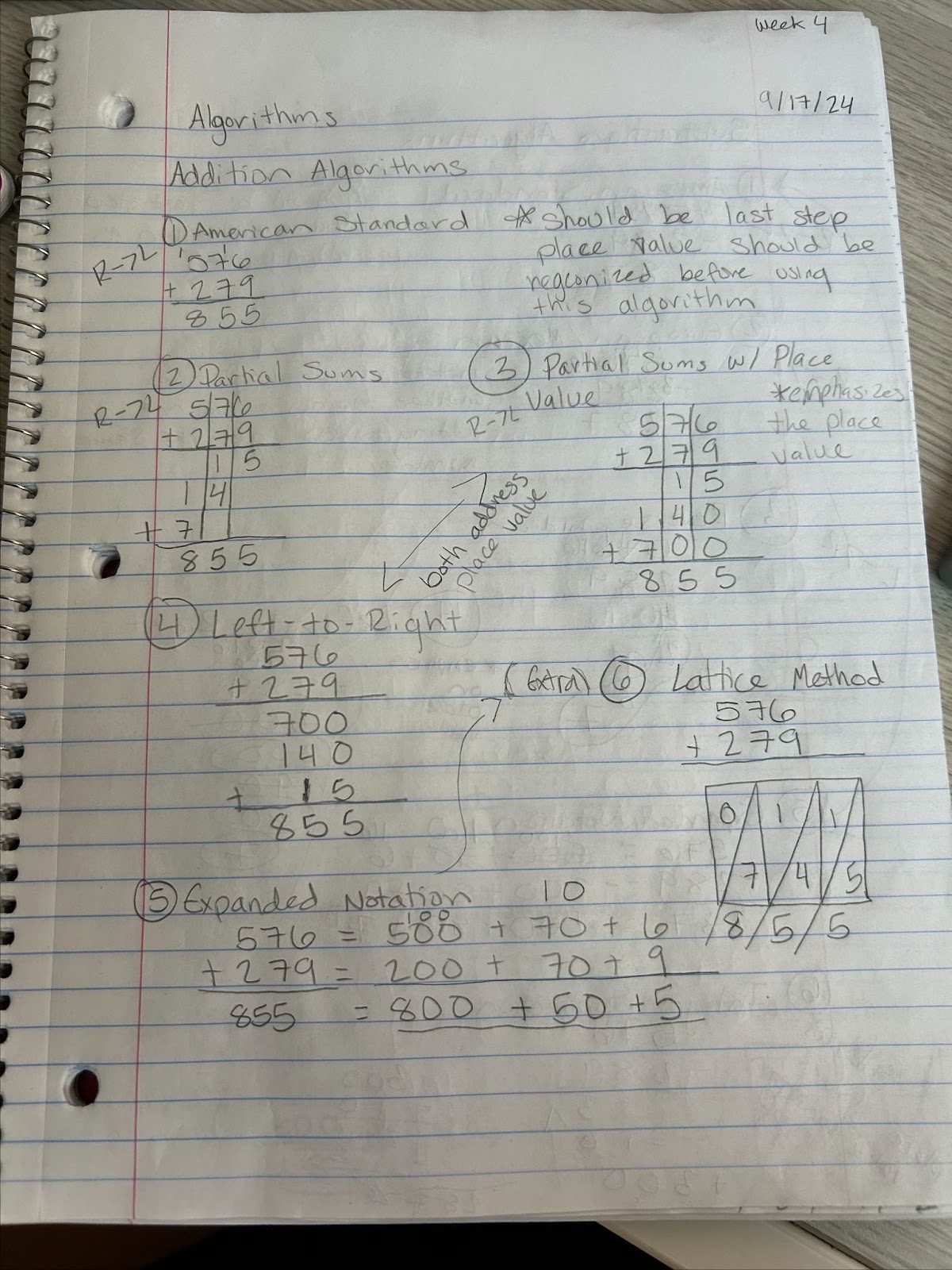
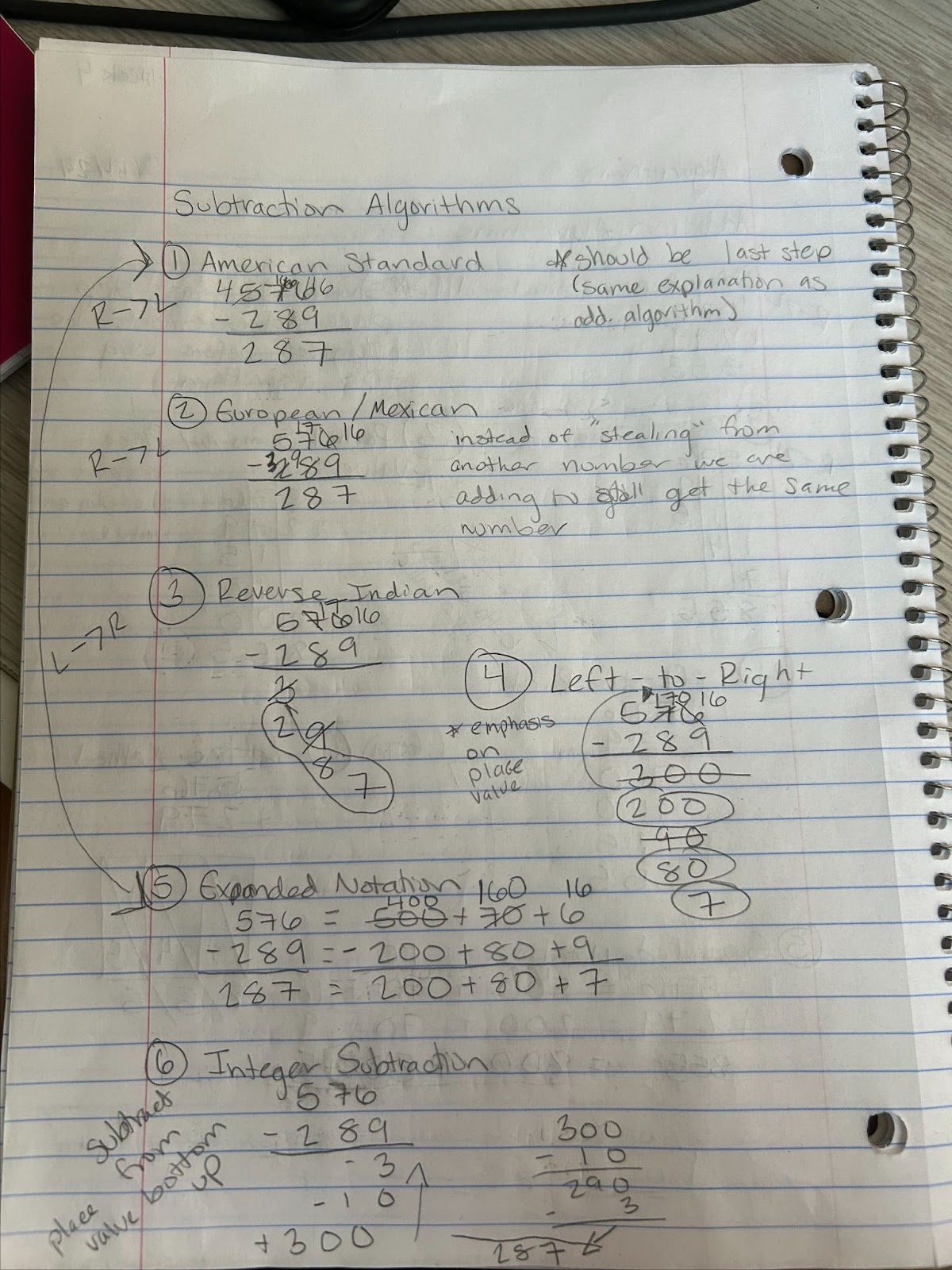
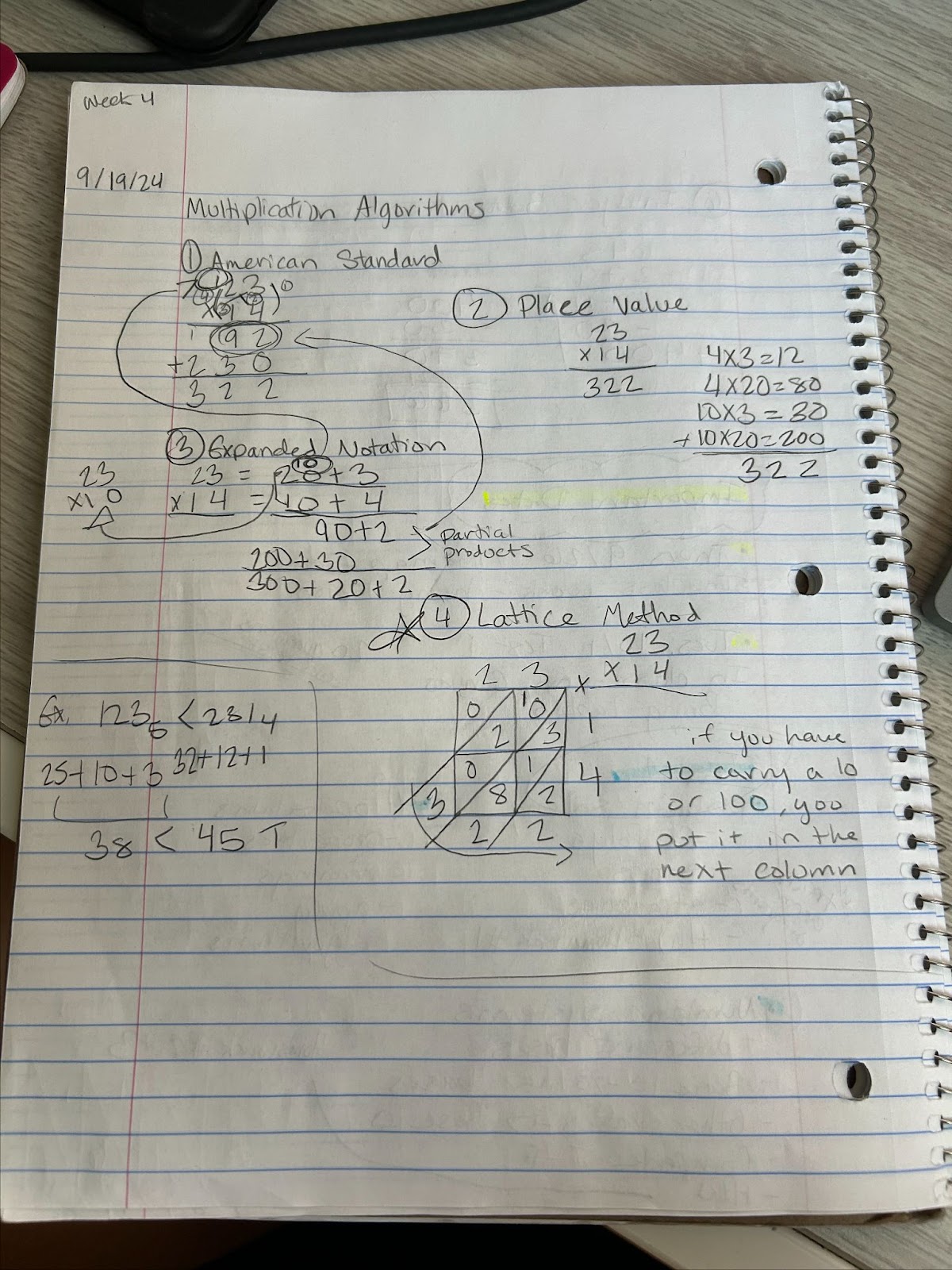
Standard Algorithms
Week 3
Four Operations Concepts & Properties
Four Operations
Addition Concepts and Properties
Addition is combining a set of numbers together
Ex. 3+4=7
Addition Properties
- Identity Property - for every number a, a+0=a, number is not going to change
- Commutative Property - order of numbers does not matter. For any numbers a & b, a+b=b+a
- Associative Property - can group numbers in different ways and still get the same result. For any number a,b, & c, (a+b)+c = a+(b+c)
Subtraction Concepts
7-3=4
- take away
- comparison
- missing addend
Multiplication Concepts
- repeated addition
- combining
- a group of numbers or "groups of --- "
Ex. 2+2+2 = 6 or 3 groups of 2 or 3x2=6
Properties (properties are very similar to addition properties)
- Identity - ax1=a
- Commutative - axb = bxa, order doesn't matter
- Associative - (axb)xc = ax(bxc), group of numbers doesn't matter
- Zero Property - for any number a, ax0=0, any number multiplied by 0 is 0
- Distributive Property - ax(b+c) = (axb) + (axc)
Division Concepts
- sharing
- repeated subtraction
The Properties of Addition and Multiplicaltion
Week 2
Numeration Systems
Numeration Systems are:
a way of recording quantity
are systems for representing quantity or a number in a consistent manner
The numeration system used in America is Base 10 number system.
It is a consistent one-to-ten relationship
There are other number systems, such as
Base 2, Base 3, Base 5, Base 8, etc.
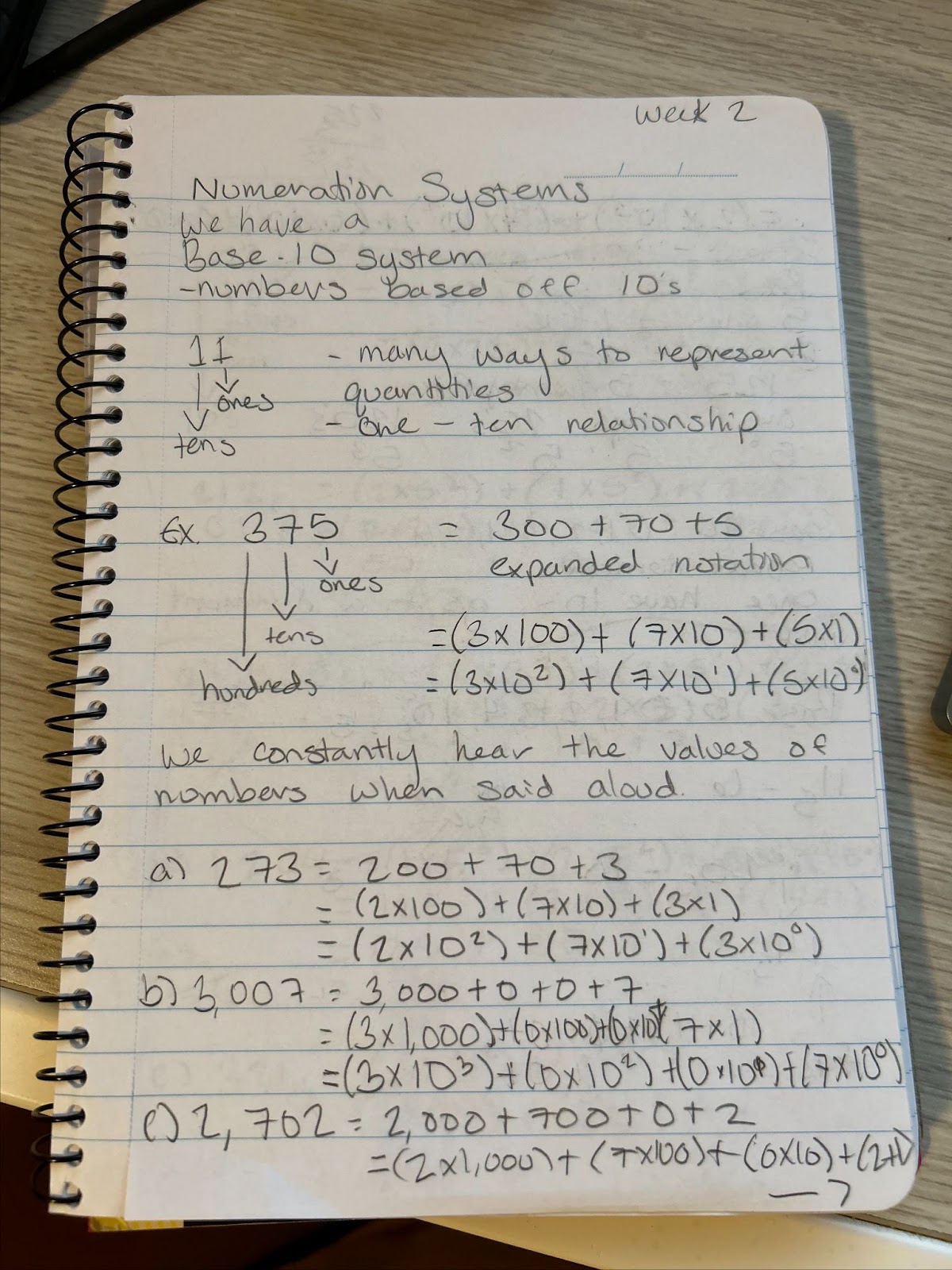
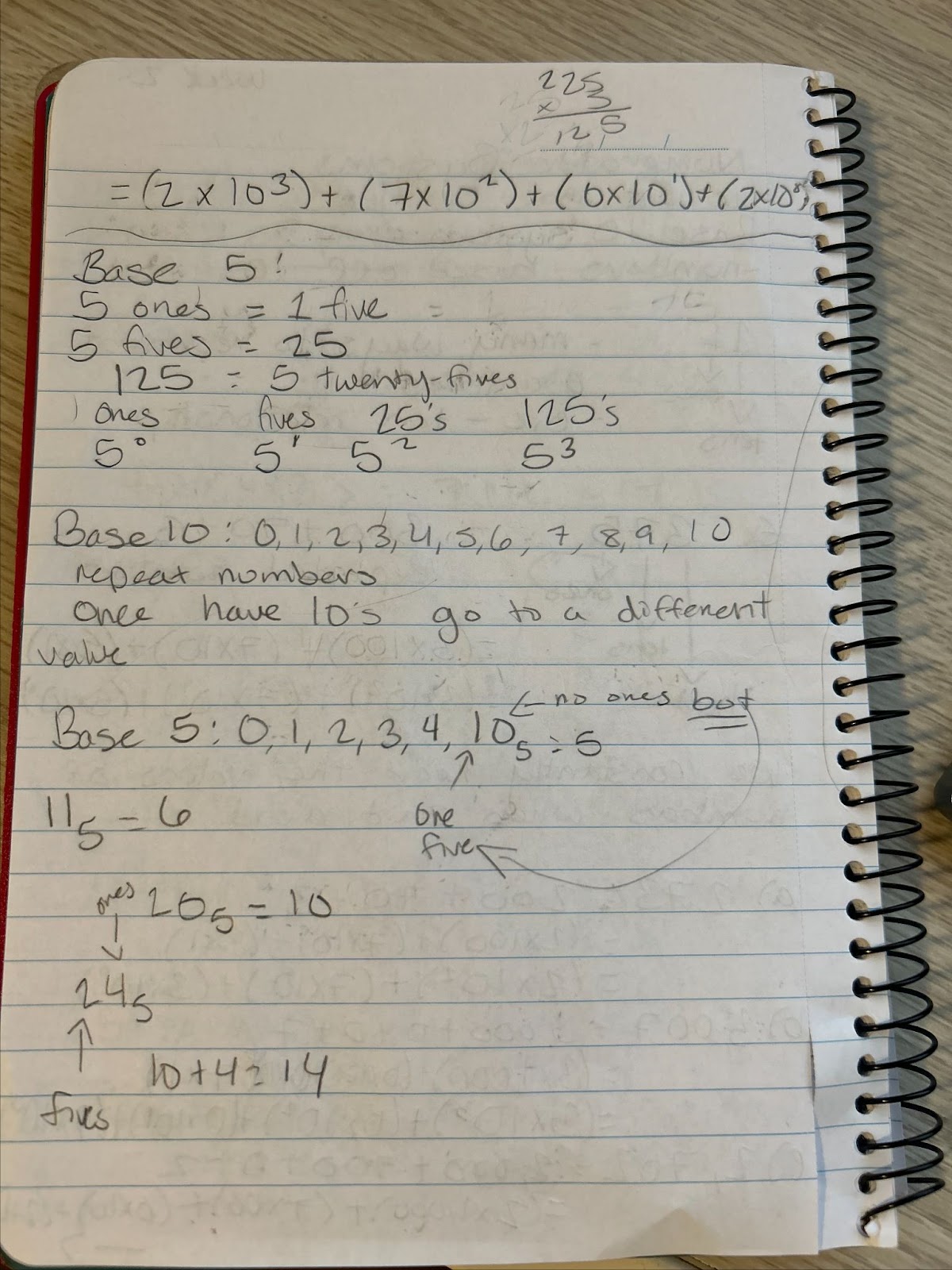
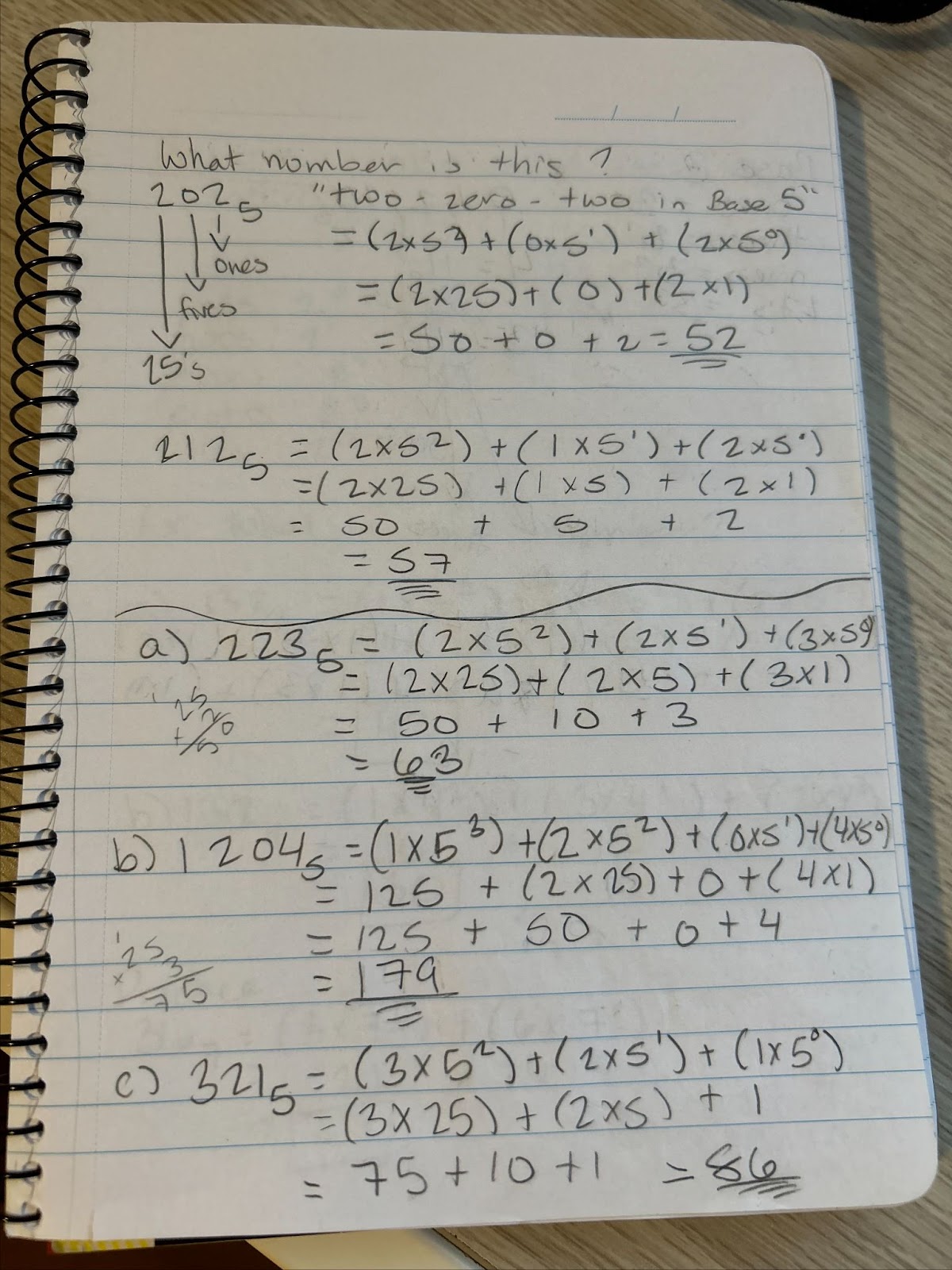
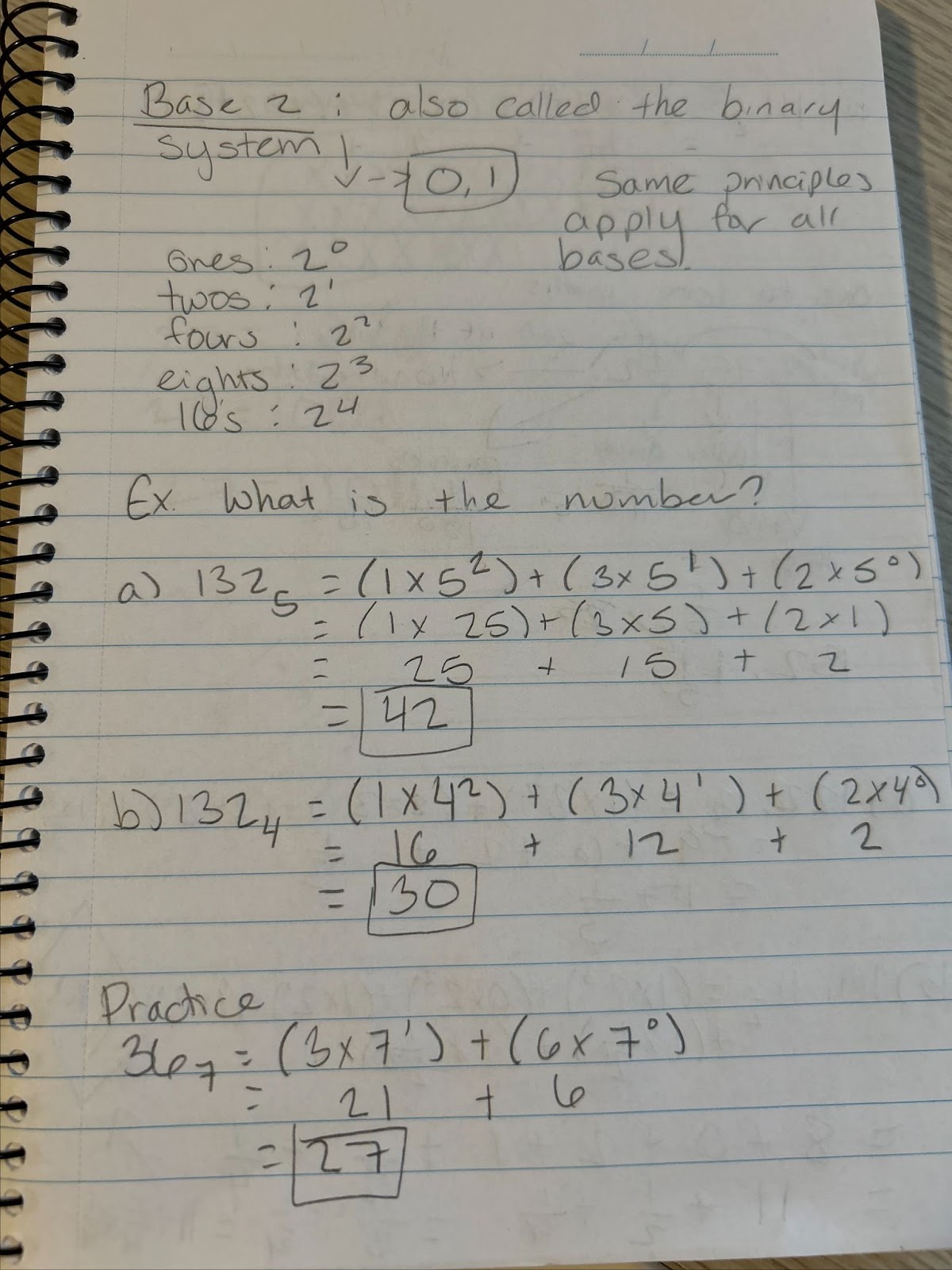
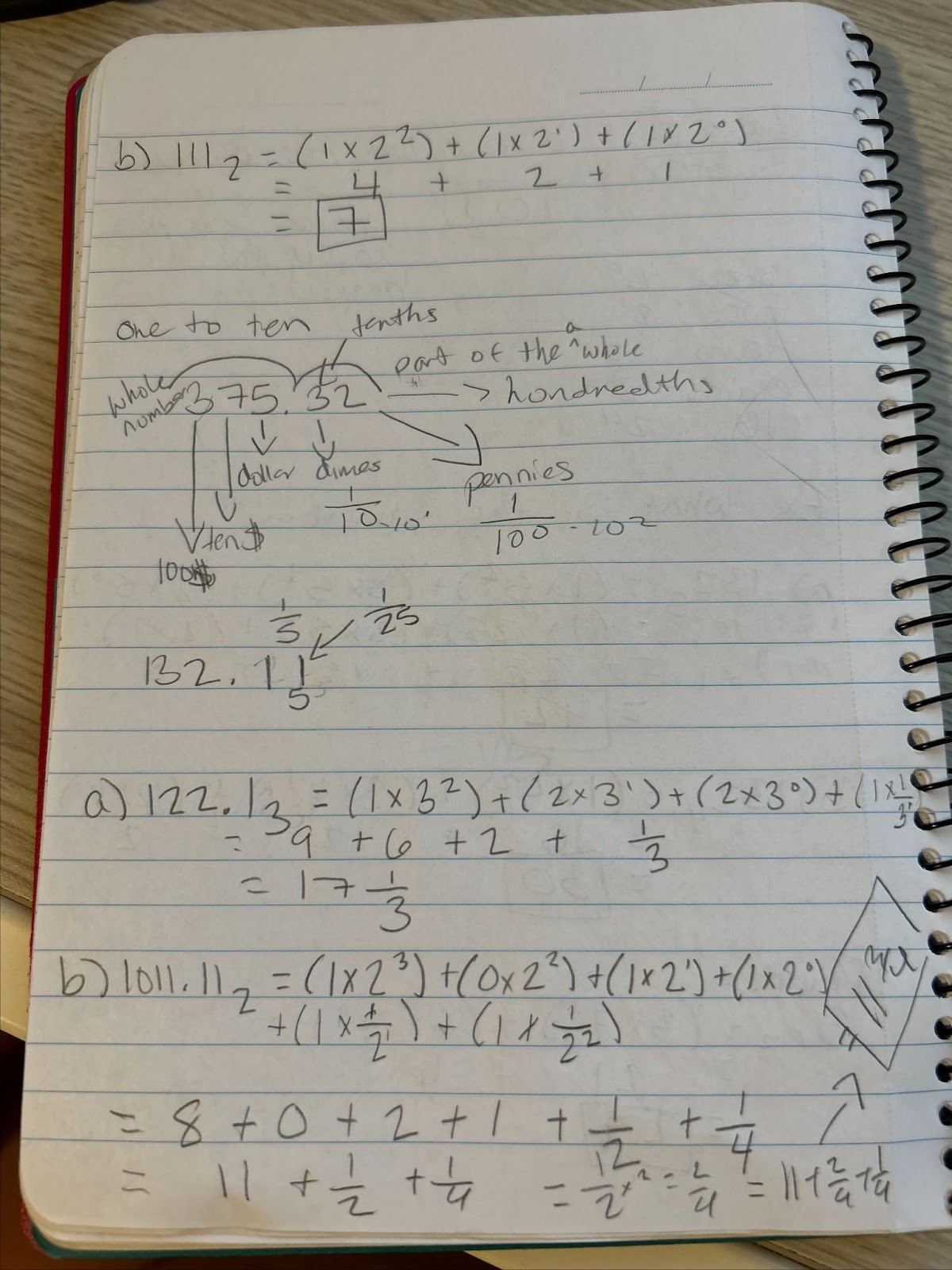
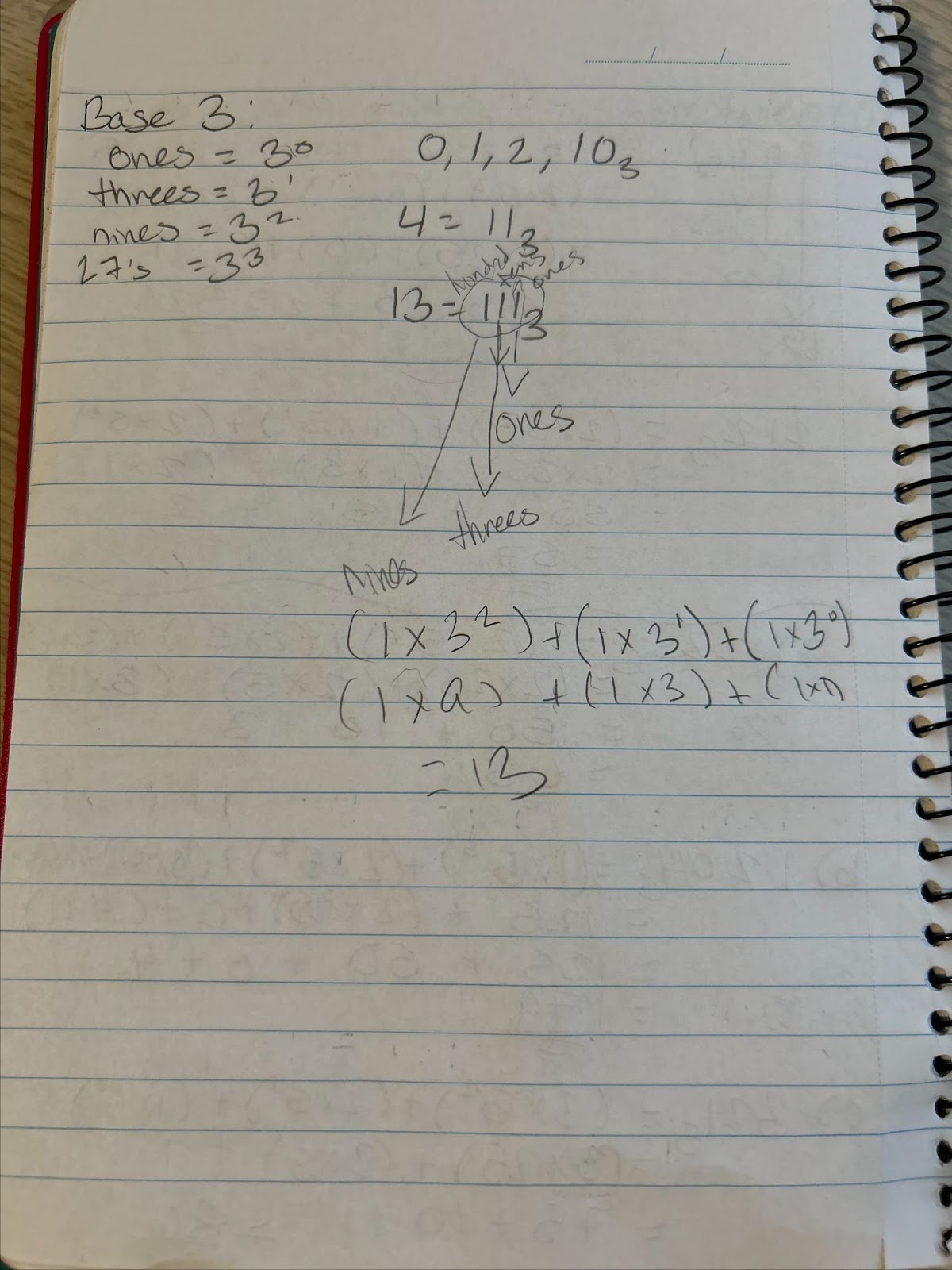
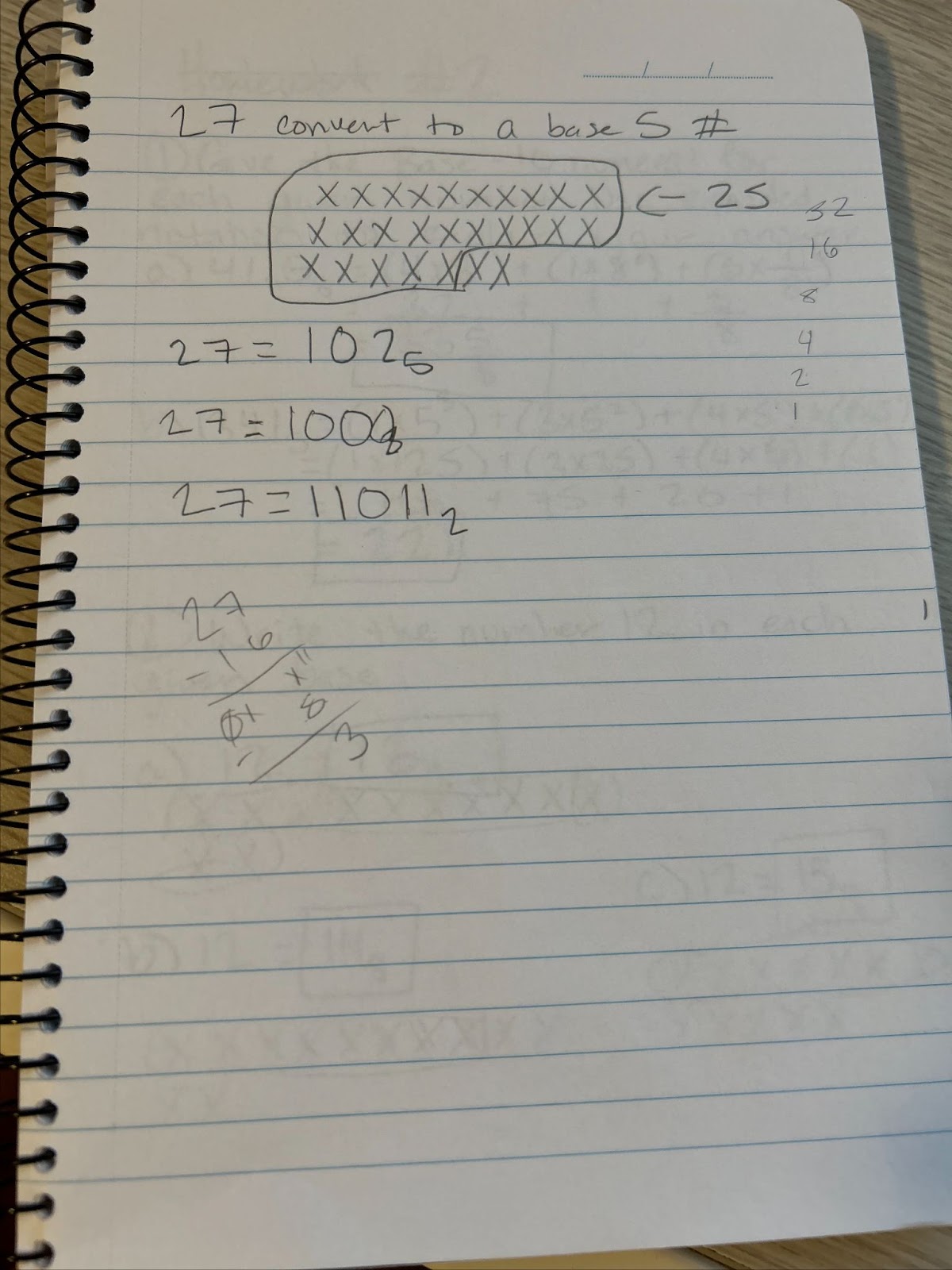
Intro to Numerations Systems
Week 1
Problem Solving
Problem Solving
George Polya (mathematician)
- from Hungary
- wrote the book "How to Solve It"
Solving Problems involves 4 steps:
Understand the problem
- what are you being asked find out/show?
- can you state the problem in your own words
- can you draw a picture or diagram to help you understand the question
Devise a Plan
- guess and check/trial and error
- make the problem simpler
Carry Out the Plan
- if one strategy doesn't work try another one
- usually easier than devising
- be persistent
Look Back (reflect)
- does your answer make sense
- did you answer all of the questions
Ex.
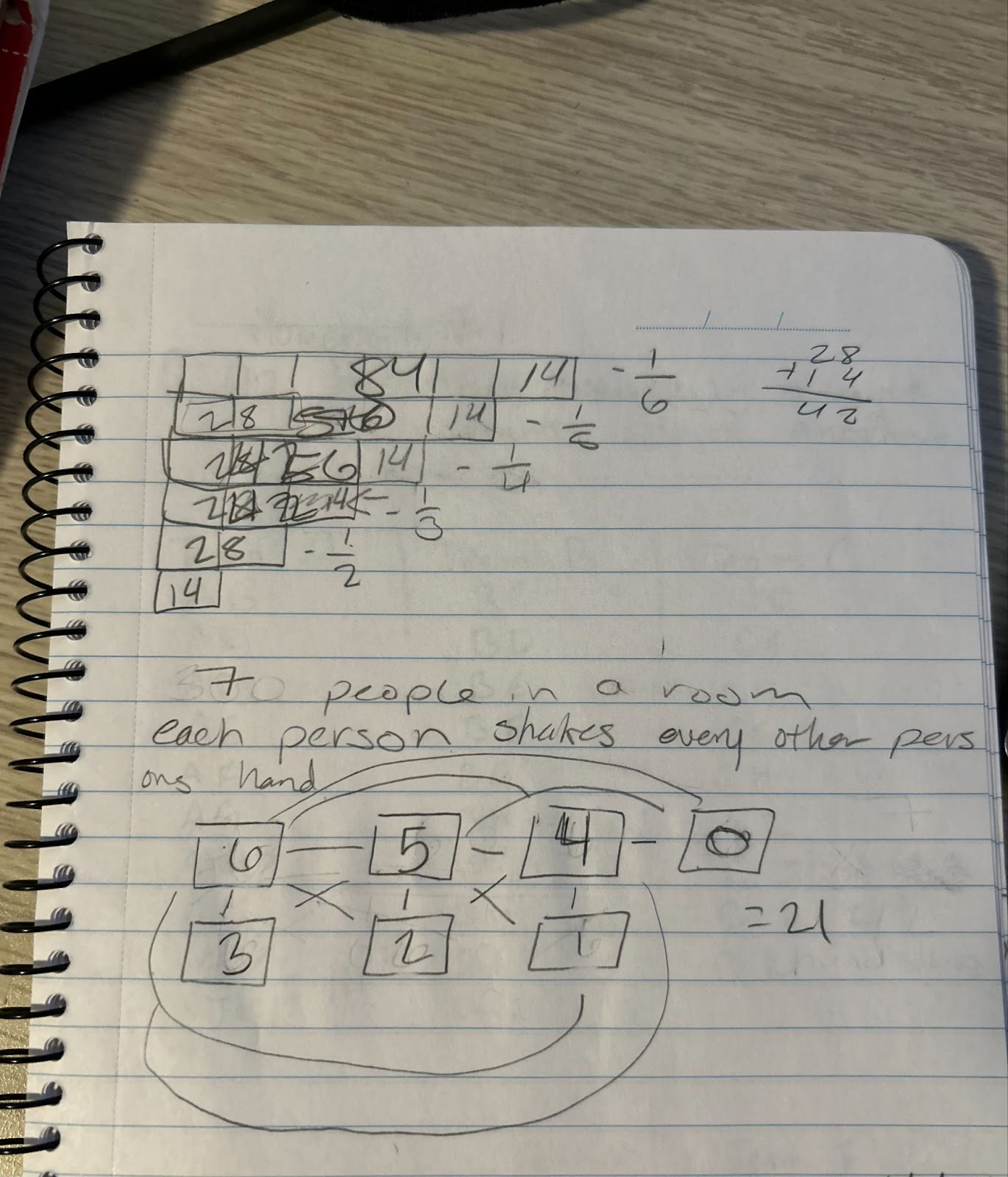
4 Steps to Problem Solving
